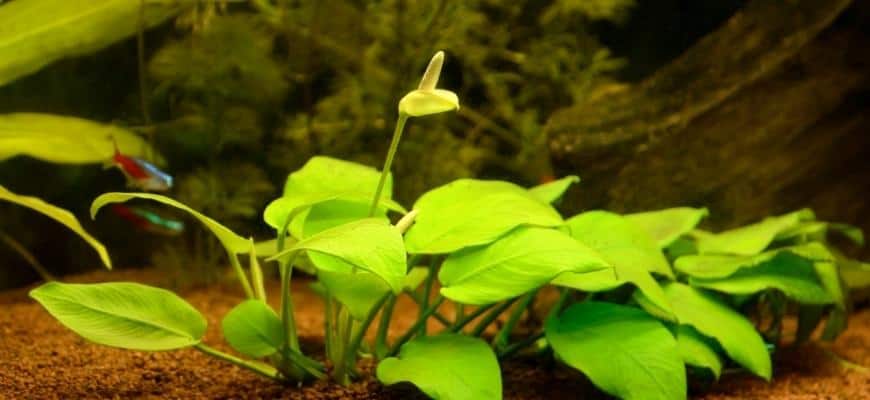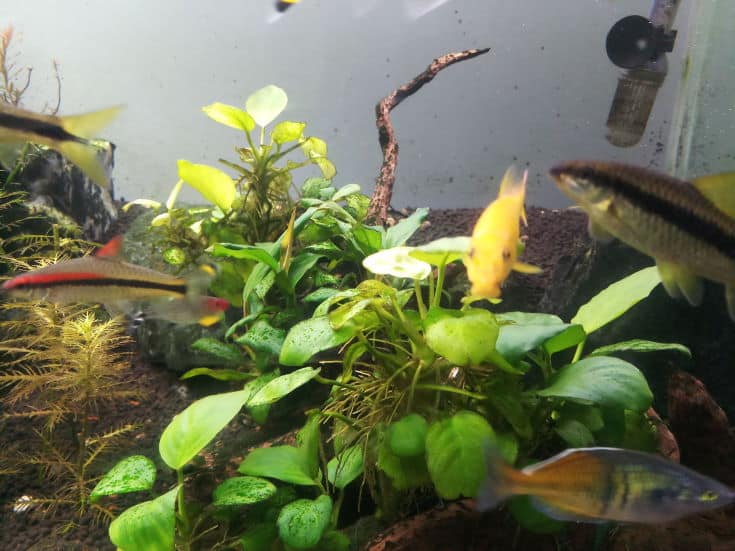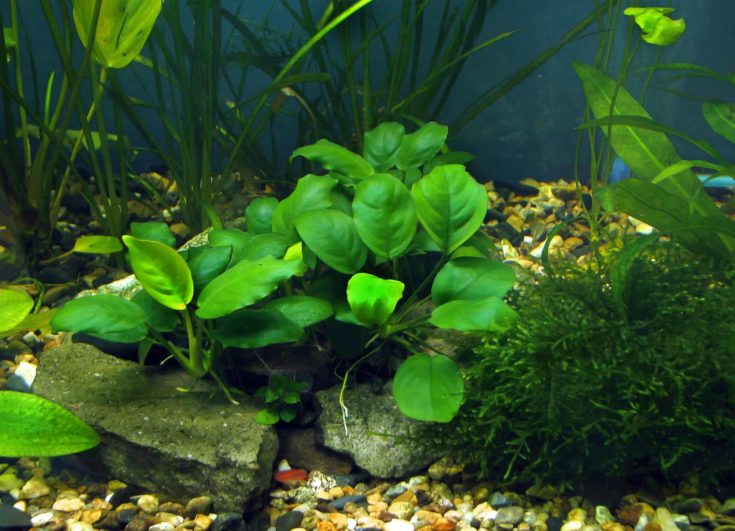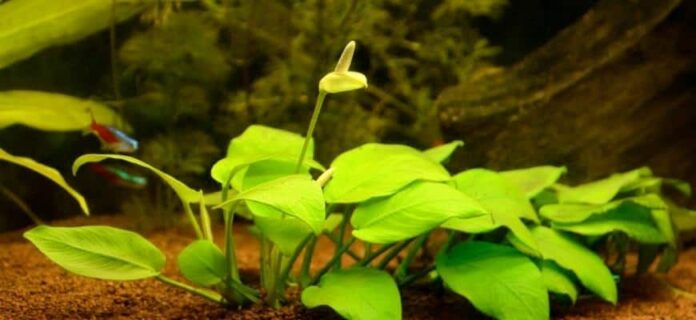Growing flowers underwater has always been a challenge because many aquatic crops require special environmental conditions to bloom and to protect the blooms. If you have an Anubias plant, you may be in luck because this plant is hardy, maintains nitrate levels when fertilized, and can even bloom underwater!
Anubias sp.
The Anubiaceae family is a huge and fairly numerous group of aquatic and semi-aquatic flowering fern-like perennial plants native to Africa. During the day they are usually available at your local fish store or even online!
All healthy anubians have transparent, waxy leaves that are usually shaped like an arrowhead or spear. The leaves vary in color from darkish immature to black, bronze, pinkish-red and even soft purple. There are about 82 species of Anubia with many subspecies, varieties and cultivars.
Although many of these species are able to survive underwater, most anubians flower above water. To this end, hobbyists often apply “strategies” to their crops to induce flowering underwater. Continue studying to check further!
Anubias flower – data for flowering underwater


Can you make your Anubia bloom? You're in luck! This step-by-step information will tell you how you can effectively induce your submerged plant to bloom for the first time.
Step 1: Get rid of the leaves
The first step in the process is to remove all but 5-6 leaves of the plant on the rhizome. This is done because it takes a lot of energy for flowers to bloom. Leaves, as you might expect, make this journey in one of the best ways, since they also require a lot of energy.
To remove leaves, simply pull them off by hand. They will come off easily, and you shouldn't be surprised if a few leaf nodes come off in the process. Allow plenty of widespread leaves to be left for photosynthesis! As mentioned earlier, 5-6 leaves per rhizome should be more than enough.
Step 2: Open the rhizome
You should then expose the rhizomes by destroying the various substrates so that there are no rocks underneath to hide them. Throughout the flower bud formation period, the stem will develop upward and may be damaged if it touches anything at or below the substrate level.
We recommend using fluorite substrate, laterite substrate or eco-friendly substrate as they are easy to remove without damaging the roots. Using very durable substrates such as clean gravel or aqueous soil is simply not helpful because it may damage the rhizomes when you try to dig them up for this process.
Step 3: Stop Fertilizing


It would be counter-intuitive to stop fertilizing your aquarium plants because you need to grow flowers, however, it is true. When crops are exposed to lower levels of nutritional vitamins, they focus all their energy on blooming flowers to ensure the survival of their species. For this reason, you should stop all fertilizers when stimulating flowering.
You can probably get your plant out of any liquid fertilizer, or just a discount on the dosage if you use a strong capsule fertilizer. The ideal course of action is to not fertilize the plant in the slightest and let it ride out the process on its own.
Step 4: Bleaching the Rhizomes
You should then bleach all the rhizomes except the one that is ready to become a flowering plant. Try to choose one that has at least 5-6 nodes from which you will propagate new crops. Remove all the different rhizomes from the aquarium and bleach them for 1 hour. This is to sterilize the rhizomes in case any of them carry diseases that should not be passed on to the flowering plant.
Aquarists commonly use a product known as Clorox, which contains sodium hypochlorite. Prepare a solution of 1 half bleach and 10 parts water and soak the rhizomes for 1 hour. After this, rinse them until the water is clear and place them in the aquarium along with the remaining unbleached rhizomes.
Step 5: Turn down the lighting again.
Now that you have plenty of leaves left, it's time to take another look at the lighting. In order for flowers to be born, it is necessary to make a special distinction between night and day, as is customary in nature.
Reduce the lighting again to about 0.5 watts per gallon (1 watt per 4 liters). If you use a different wattage for your aquarium than normal, keep it out of sunlight longer and/or move it closer to the leaves of the plant. Be careful at this stage so you don't have to burn the plant or lose any leaves. Take care of your plant and if the leaves start to burn, remove the sunlight immediately!
Step 6: Reduce the water flow again


After a few days of changing your light schedule again, you should make another change to induce flowering. Flowering in nature comes with sudden changes, so it is most interesting to imitate this modification right here. Stop the circulation of water through the plant, making sure no air bubbles enter the aquarium when the filters are on.
If you want complete control over this process, simply disconnect the air tube going to your power heads or air stones. Be sure to change the timers so that the filters turn off at the same time as the lights. By stopping the circulation of water with Anubias, you may be simulating a dry season, so the plant will do the rest, delivering the results you want!
Step 7: Be Affected Individually
Endurance is a necessary factor in this process, so stay calm and don't expect anything drastic to happen overnight. It will take your plant several weeks to a month to produce a flower stalk, and it is impossible to know on what day this may occur. The same thing happens with many types of flower-producing crops, so don't be surprised if it happens.
Once your Anubias has started putting energy into its flower stalk, it is important to leave it alone. It won't grow taller or sprout new leaves as quickly as it starts to bloom, so enjoy this unusual spectacle and let nature take its course!
Completely different recommendations
Use soft water
One of the many keys to underwater flowering success is very soft water that has no noticeable KH or GH. This is because Anubias is a true aquatic animal and requires this type of water to reproduce and flower underwater.
Simulate seasonal changes
If your tank has very low levels of NO3 or PO4, this can also help induce blooms as it mimics the net seasonal changes in the wild. To take action, protect NO3 and PO4 at 0 ppm and use an RO/DI device to remove any traces of these components from your water.
Protect the ideal water temperature


For best results, keep your aquarium temperature between 77-82°F (25-28°C). Anubia is a tropical plant that blooms in hotter water. Mimicking these water conditions in your aquarium can give the plant the signal to start blooming!
Conclusion
We hope this text content has taught you everything you need to know about flowering underwater with Anubias, and that you can easily use this information to flower your own personal crops just as successfully!
If you liked this text content, please share it with another fanatic or drop us a comment to tell us what's up. Your help means the world to us.
Until next time, we wish you good luck and good fishing!

